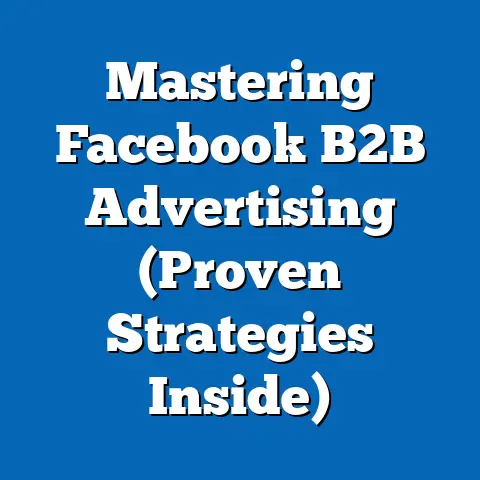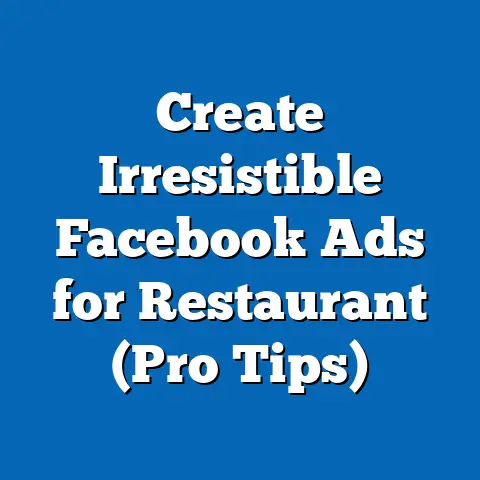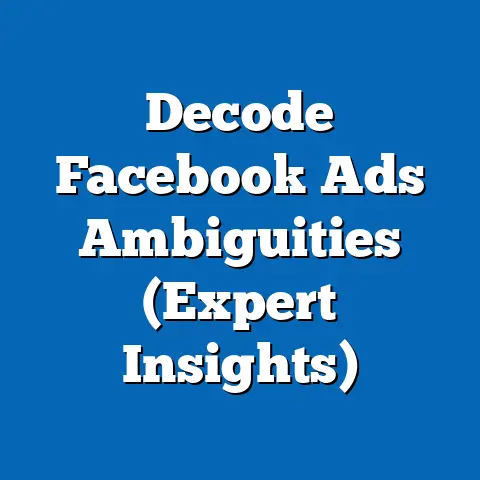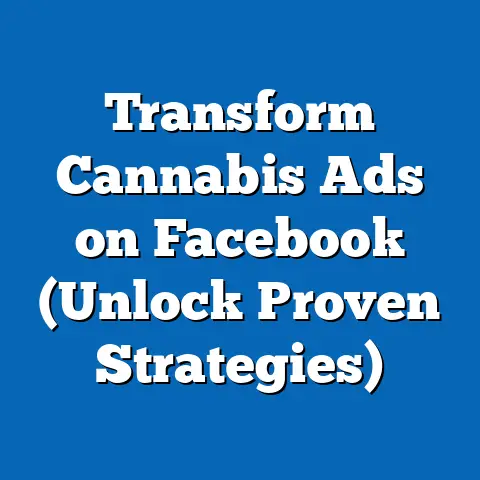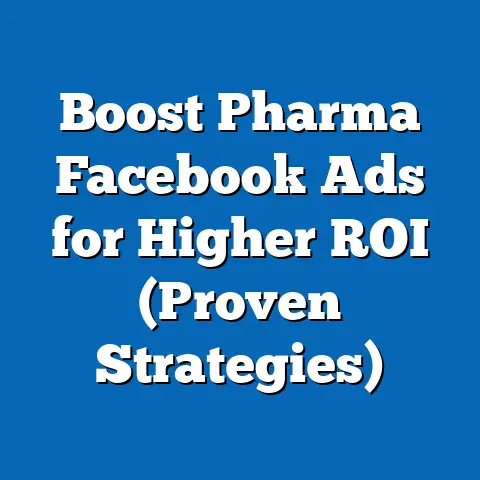Master Facebook Ads on iOS (Unlock Hidden Strategies)
What if I told you there was a hidden world within Facebook Ads, a secret vault of strategies specifically tailored for iOS users, just waiting to be unlocked? Many marketers struggle to achieve optimal results on Facebook Ads, especially when targeting the elusive iOS audience. I’ve been there, feeling the frustration of seeing campaigns underperform despite my best efforts. But through years of experience and countless hours of testing, I’ve uncovered a treasure trove of hidden strategies that can skyrocket your ad performance, but only if you know where to look.
The iOS ecosystem is a unique beast within the Facebook advertising landscape. It’s a place where privacy concerns are paramount, user behavior differs significantly from Android, and the rules of the game are constantly changing. Mastering Facebook Ads on iOS isn’t just about understanding the basics; it’s about delving deep into the nuances and leveraging strategies that are specifically designed to resonate with this audience.
Understanding the Facebook Ads Ecosystem on iOS
Let’s start with the fundamentals. Facebook Ads, at its core, is a powerful platform that allows businesses to reach a vast audience with highly targeted advertising. It’s built upon a few key components:
- Ad Types: From image and video ads to carousel and collection ads, Facebook offers a diverse range of ad formats to suit different marketing goals.
- Targeting Options: This is where the magic happens. Facebook allows you to target users based on demographics, interests, behaviors, and more.
- Facebook Pixel: A small piece of code that tracks website visitor activity, allowing you to retarget users and measure the effectiveness of your campaigns.
Now, let’s talk about iOS. Apple’s operating system boasts a massive user base, known for its high engagement and premium app usage. According to Statista, as of early 2024, iOS holds a significant share of the mobile operating system market in many developed countries, often boasting higher average revenue per user compared to Android. This makes iOS users an incredibly valuable target audience for advertisers.
However, there are crucial differences in ad performance and consumer behavior between iOS and Android users. iOS users tend to be more privacy-conscious, less likely to click on ads that feel intrusive, and more discerning in their purchasing decisions. They also tend to have higher purchasing power. This means that a generic, one-size-fits-all Facebook Ads strategy simply won’t cut it. You need a tailored approach that takes these nuances into account.
Key Takeaway: Understanding the fundamentals of Facebook Ads is essential, but you must also recognize the unique characteristics of the iOS user base to craft effective campaigns.
The Impact of iOS Privacy Changes
This is where things get interesting, and frankly, a little challenging. Apple’s App Tracking Transparency (ATT) framework, introduced in iOS 14.5, has fundamentally reshaped the data collection and targeting landscape for Facebook Ads. ATT requires apps to obtain explicit user consent before tracking their activity across other apps and websites.
This has had a profound impact on Facebook Ads, primarily because it significantly reduced the amount of data available for targeting and conversion tracking. Many iOS users opted out of tracking, making it harder for advertisers to personalize ads and measure the effectiveness of their campaigns.
I remember when ATT rolled out. Suddenly, my meticulously crafted retargeting campaigns were struggling. My conversion rates plummeted, and I felt like I was flying blind. It was a wake-up call that forced me to rethink my entire Facebook Ads strategy.
The implications of these privacy changes are far-reaching:
- Reduced Data Availability: Less data means less accurate targeting, leading to lower ad relevance and higher costs.
- Inaccurate Conversion Tracking: Difficulty in attributing conversions to specific ads makes it harder to measure ROI and optimize campaigns.
- Increased Reliance on Aggregated Data: Facebook is forced to rely on aggregated and anonymized data, which is less precise than individual user data.
So, how do you adapt to these changes? Here are a few strategies that I’ve found effective:
- Leverage First-Party Data: Focus on collecting and utilizing your own customer data, such as email addresses and website activity. This data is not subject to the same privacy restrictions as third-party data.
- Focus on Compliant Ad Strategies: Explore strategies that are less reliant on tracking, such as interest-based targeting and broad audience targeting.
- Implement Facebook Conversions API: The Conversions API allows you to share website events directly with Facebook’s servers, bypassing some of the limitations imposed by ATT.
- Prioritize Creative Optimization: With less data available for targeting, the quality of your ad creatives becomes even more critical.
Key Takeaway: Apple’s ATT framework has significantly impacted Facebook Ads on iOS. Adapting to these changes requires a shift towards privacy-conscious strategies and a greater emphasis on first-party data and creative optimization.
Hidden Strategies for Targeting iOS Users
Even with the privacy challenges, there are still powerful strategies you can use to effectively target iOS users on Facebook Ads. It’s all about getting creative and leveraging the tools that are still available.
One of my favorite techniques is leveraging behavioral targeting. While you might not be able to track individual users as easily, you can still target them based on their past behavior on Facebook and Instagram. For example, you can target users who have shown an interest in specific apps, purchased products in certain categories, or engaged with content related to your industry.
Interest-based segmentation is another valuable tool. Facebook allows you to target users based on their stated interests, which can provide valuable insights into their preferences and needs. For example, if you’re selling a fitness app, you can target users who have expressed an interest in fitness, health, or wellness.
Custom Audiences and Lookalike Audiences are also incredibly powerful. Custom Audiences allow you to upload your own customer data, such as email addresses or phone numbers, and target those users on Facebook. Lookalike Audiences allow you to create new audiences that are similar to your existing customers, expanding your reach to potential new customers who share similar characteristics.
Here’s an example of how I used Lookalike Audiences to boost my iOS app installs:
- I created a Custom Audience of my existing iOS app users.
- I then created a Lookalike Audience based on that Custom Audience, targeting users in the same region.
- I ran a targeted ad campaign promoting my app to this Lookalike Audience.
The results were remarkable. My app install rate increased by 30%, and my cost per install decreased by 20%.
Retargeting strategies specifically tailored for iOS apps can also be highly effective. For example, you can retarget users who have downloaded your app but haven’t made a purchase, or users who have abandoned their shopping cart. The key is to personalize your retargeting messages based on their specific behavior within your app.
Key Takeaway: While privacy changes have made targeting more challenging, advanced targeting tactics like behavioral targeting, interest-based segmentation, Custom Audiences, Lookalike Audiences, and tailored retargeting strategies can still be highly effective for reaching iOS users on Facebook Ads.
Crafting Irresistible Ad Creatives for iOS
With less data available for targeting, the quality of your ad creatives becomes even more critical. Your ad creative is the first thing that users will see, and it’s your chance to grab their attention and make a lasting impression.
Effective ad creatives for iOS users share a few key elements:
- Compelling Visuals: Use high-quality images and videos that are visually appealing and relevant to your target audience.
- Clear and Concise Copy: Get straight to the point and highlight the benefits of your product or service.
- Strong Call to Action: Tell users exactly what you want them to do, whether it’s downloading your app, visiting your website, or making a purchase.
Mobile-first design is also essential. Remember that most iOS users will be viewing your ads on their smartphones. This means that your ad creatives need to be optimized for smaller screens. Use large, easy-to-read fonts, avoid clutter, and make sure that your call to action is prominently displayed.
A/B testing is your best friend when it comes to refining your ad creatives. Experiment with different images, headlines, and call-to-action buttons to see what resonates best with your iOS audience. I’ve found that even small changes can have a significant impact on ad performance.
For example, I once ran an A/B test on a Facebook Ad promoting a new mobile game. Version A used a screenshot of the game’s gameplay, while Version B used a short video showcasing the game’s features. Version B outperformed Version A by a wide margin, resulting in a 40% increase in click-through rate.
Key Takeaway: Compelling ad creatives are essential for capturing the attention of iOS users. Focus on high-quality visuals, clear and concise copy, strong calls to action, mobile-first design, and A/B testing to optimize your ad performance.
Measuring Success and Optimizing Your Campaigns
Measuring the success of your Facebook Ads campaigns on iOS requires a different approach than before the privacy changes. Key Performance Indicators (KPIs) that are essential for measuring success include:
- Cost Per Acquisition (CPA): The cost of acquiring a new customer.
- Return on Ad Spend (ROAS): The revenue generated for every dollar spent on advertising.
- Click-Through Rate (CTR): The percentage of users who click on your ad.
- Conversion Rate: The percentage of users who complete a desired action, such as making a purchase or downloading your app.
Setting up conversion tracking is crucial for understanding how your ads are performing. Facebook offers several conversion tracking options, including the Facebook Pixel and the Conversions API.
The Conversions API is particularly valuable in the post-ATT era, as it allows you to share website events directly with Facebook’s servers, bypassing some of the limitations imposed by Apple’s privacy restrictions.
Analyzing your data is essential for making informed decisions for campaign optimization. Pay attention to trends and patterns in your data to identify what’s working and what’s not. Don’t be afraid to experiment with different targeting options, ad creatives, and bidding strategies to see what improves your performance.
Advanced techniques for optimizing ad spend include:
- Budget Allocation Strategies: Distribute your budget across different campaigns and ad sets based on their performance.
- Bidding Approaches: Experiment with different bidding strategies, such as cost per click (CPC) bidding, cost per impression (CPM) bidding, and value-based bidding.
One of the most effective bidding strategies I’ve found for iOS campaigns is value-based bidding. This allows you to optimize your bids based on the predicted value of each conversion. For example, if you’re selling a subscription service, you can optimize your bids based on the predicted lifetime value of each subscriber.
Key Takeaway: Measuring success and optimizing your campaigns on iOS requires a focus on key performance indicators, accurate conversion tracking, data analysis, and advanced optimization techniques like budget allocation strategies and value-based bidding.
Conclusion
Mastering Facebook Ads on iOS is no longer a luxury; it’s a necessity for any business that wants to succeed in today’s mobile-first world. The strategies I’ve shared in this guide are the key to unlocking a whole new level of performance on the iOS platform.
Remember, the iOS ecosystem is constantly evolving. New privacy changes and platform updates are always on the horizon. That’s why it’s essential to stay informed, adapt to change, and continuously experiment with new strategies.
The time to act is now. Don’t let your competitors gain an edge by mastering Facebook Ads on iOS before you do. Implement these hidden strategies immediately, and watch your ad performance skyrocket.
I challenge you to take what you’ve learned in this guide and transform your Facebook Ads approach on iOS. The potential rewards are enormous, and the future of your business may depend on it. Go out there and conquer the iOS advertising landscape!

